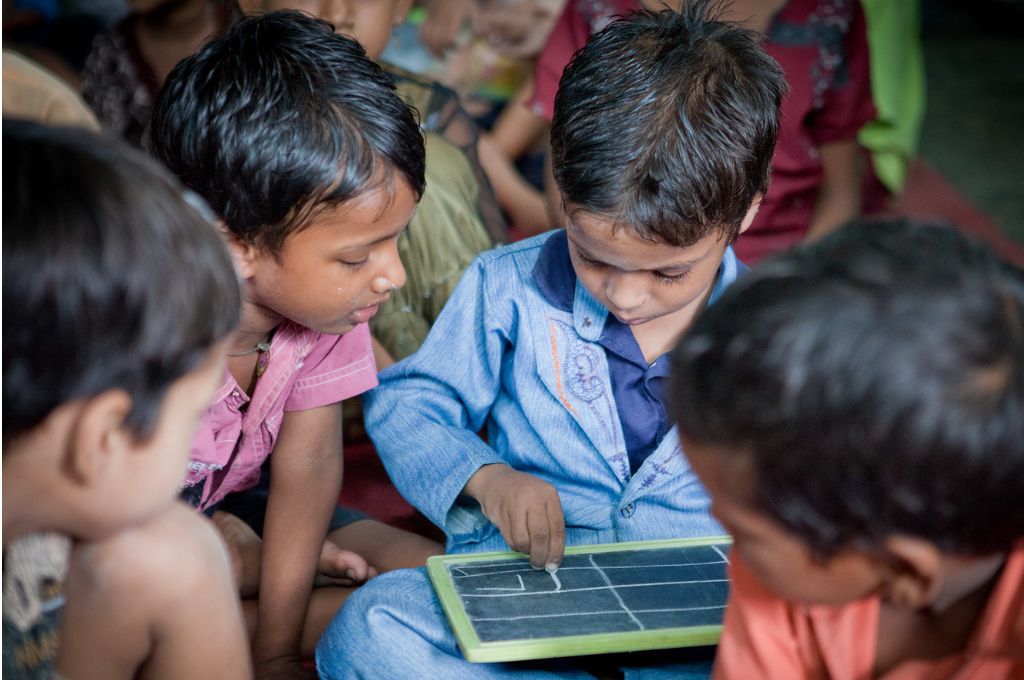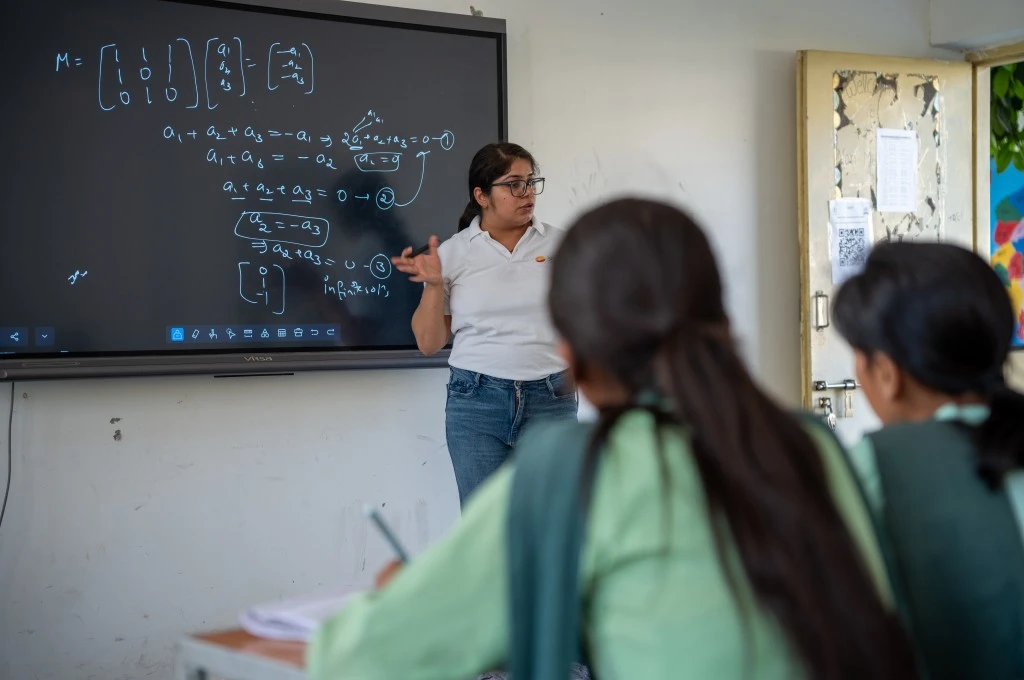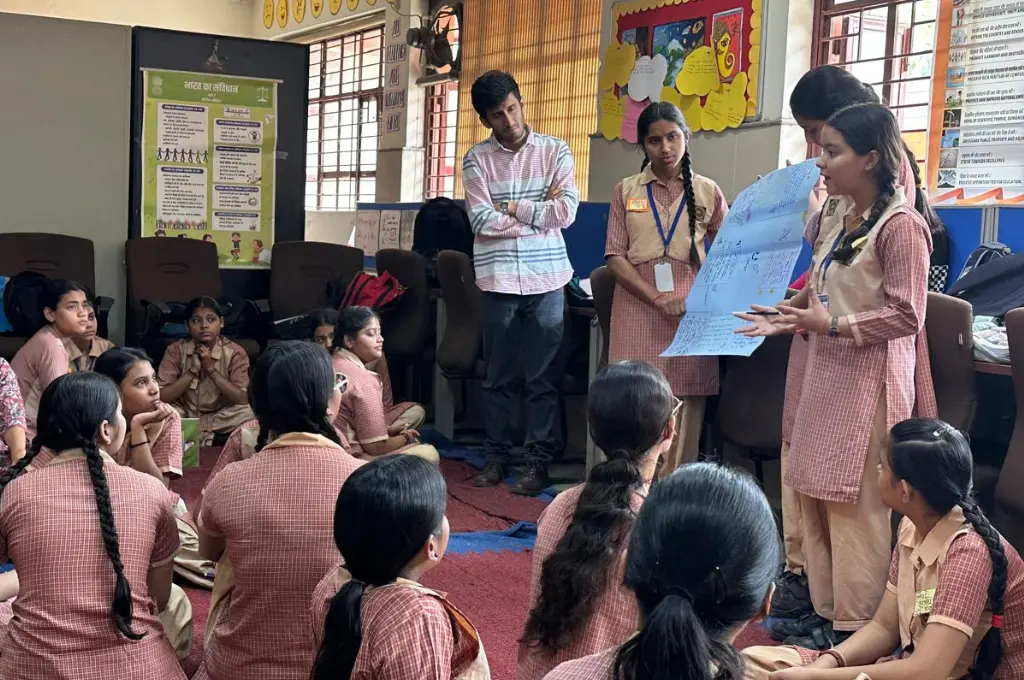In India, several young people do not stay in school beyond the primary level. Those who leave the school system typically remain unemployed, whereas those who stay in the system display relatively poor learning outcomes. Although providing young people with a good education is an important goal for all countries, India is finding it particularly difficult to achieve this goal. Some of the barriers to its realisation arise from the fact that insufficient resources have been allocated to educational systems by the nation’s central and state governments. In addition, the resources being expended by government, parents, and students themselves are not being utilised effectively to obtain the best possible outcomes.
Developing a good educational system that delivers on higher-order goals, such as the encouragement of good attitudes and a sense of morality, justice, and optimism, is a challenging endeavour. In fact, it is entirely possible that traditional schooling systems take students away from such goals, even if they manage to successfully deliver reading, writing, and arithmetic skills. Additionally, non-cognitive skills, which significantly complement and enhance the contribution of the more traditional cognitive skills, are often neglected. The most prominent non-cognitive skills include openness to experience, conscientiousness, extraversion, agreeableness, and neuroticism. These skills have a strong ability to predict longer-term outcomes in life and can be shaped through various tools and interventions.
Educational interventions have primarily focused on the improvement of schools, whose success is measured by the scores obtained by their students in examinations. This narrow view assumes that achievement test scores are reflective of life skills, and fails to adequately consider the importance of non-cognitive skills and how they can be developed over time.

Addressing this urgent challenge on an Indian scale, which involves more than 500 million children and youth, requires a number of interventions both at the systemic level and at the level of children who are presently in school. Although systemic changes can only occur gradually, there are certain evidence-based interventions that can be implemented today to improve the cognitive, non-cognitive, and job-readiness skills of young people. Policymakers and change agents will need to carefully continue exploring longer-term solutions with the cognizance that the following interventions cannot be a substitute for structural reforms.
Psychosocial stimulation in early childhood
The provision of psychosocial stimulation—physical, sensory, and/or emotional input—to young children can have a substantial impact later in their lives, especially when their parents are also trained to offer such stimulation to them. For instance, a study conducted in Cuttack, Orissa, analysed the impact of 18 months of weekly hour-long home visits with slum-dwelling children and their primary caregivers (usually the mother). These visits sought to increase and enhance interactions between the children and their mothers, and the mother’s ability to promote her children’s development through play. The intervention was found to improve the development of these young children in urban slums. However, the effective scaling of such programmes requires further consideration, as changes made to the intervention model in order to scale it may impact its effectiveness.
Behaviour self-regulation in early childhood
If young children, ideally in school settings at the first-grade level, are explicitly taught how to regulate their own and their classmates’ behaviour through simple, structured team games, it can have a significant impact on a number of their behaviours well into adulthood. The PAX Good Behaviour Game is an example of one such exercise that teaches children to self-regulate when excited. Over the long term, the self-regulatory ability fostered through such exercises impacts behaviours such as drug and alcohol abuse, smoking, antisocial personality disorder, and suicidal ideation and suicide attempts.

Training teachers to address adverse childhood experiences
Teachers need to be trained to be aware that a ‘difficult’ child may actually be a victim of one or more adverse childhood experiences. They also need training in addressing such behaviours. First, they must recognise if a child is going into survival mode, and respond in a kind, compassionate way. Asking ‘What’s happening here?’ rather than ‘What’s wrong with this child?’ can trigger a mental switch that will help identify when a student is displaying a fear response, which can take many forms. Second, it is important to create calm, predictable transitions in the classroom for all children. Building a routine around transitions can help the children understand what the transition is going to look like, what they’re supposed to be doing, and what’s next. Third, praising all children publicly and criticising them privately ensures sensitivity towards those who have experienced complex trauma. Lastly, using mindfulness practice in the class for all children can be beneficial, as it helps to counteract the impact of trauma.
Training teachers to offer personal safety education (PSE) to children
Child sexual abuse is a critical issue, and a broader systemic response to it requires going beyond the school, involving parents more closely in its prevention, and engaging with broader societal issues. However, offering PSE to children has been shown to reduce the likelihood of them becoming victims of sexual abuse. Arpan, a Mumbai-based nonprofit, offers (and provides training on) PSE programmes, having already developed such programmes for schools and parents. Additionally, Arpan has created a detailed set of guidelines on the steps to be taken during individual interactions between children and PSE facilitators and recommendations on how to address the issue of child sexual abuse disclosure at the level of school policy.

Teaching children at the right level
Grouping school-age children, even for short periods, by learning levels rather than by age or school grade and providing them with short bursts of focused exposure in areas where they need remediation can have a significant impact on their learning levels. Substantial formal evidence for this approach can be found in the joint work conducted by Pratham and the Poverty Action Lab at MIT. A version of this approach was implemented in Uttar Pradesh and administered by Pratham volunteers and staff during school hours. It involved grouping children from grades 3–5 according to their ability and teaching them Hindi and mathematics. Before the intervention commenced, 39 percent of the children could not recognise letters and only 15 percent of them could read a paragraph or story. After the provision of the intervention, only 8 percent could not recognise letters and 49 percent could read a paragraph or story. The curriculum development for such a programme can potentially be taken up by specialised groups such as Eklavya for mathematics and science and Pratham for specially designed mathematical games.
Teaching through questions
An adaptive question-and-answer-based method is generally understood to be an effective way for students to learn. This especially works in the presence of good teachers and small class sizes, where the teacher is able to work with each student at their own learning level in each subject. However, in India, it is not feasible to offer every student in a traditional classroom setting the same degree of individual attention. Therefore, a computer-assisted learning approach, which utilises artificial intelligence to offer highly personalised after-school instruction to children, could be an alternative worth exploring. This approach was found to improve the Hindi and mathematics test scores of middle-school students who were provided access to it, and its effects did not vary by the students’ baseline test scores, gender, or household socio-economic status.
Addressing ‘opportunity youth’
India has approximately 225 million individuals between the ages of 16 and 24, of whom approximately 187.5 million are not in any educational institution. Approximately 42 million of such youth are not employed either and can be categorised as ‘opportunity youth’. Existing evidence suggests that the most promising path is to provide such groups with programmes that offer mentoring, guidance, and information. These programmes should be workplace based, enabling the acquisition of work-relevant skills and providing disadvantaged youth with the guidance and discipline that may often be missing in their homes or schools. In the Indian context, a programme that offered additional on-the-job soft skills training to female garment workers in Bangalore found that it increased their extraversion and communication and facilitated the improvement of their technical skills. Additionally, the apprenticeship programme provided by the TeamLease Skills University in partnership with the Confederation of Indian Industry and the Ministry of Skill Development and Entrepreneurship provides work-relevant skills in an actual workplace, thereby developing non-cognitive skills as well.
Each of the above interventions has various local examples of models that have been implemented at scale and rigorously evaluated. Indian policymakers and policy entrepreneurs can learn from these in order to tackle the challenge of providing holistic learning to the nation’s youth.
—
Know more
- Read the full paper that this article is an excerpt of here.
- Read this article to understand how successful local-level measures in Indian education can be effectively scaled.




